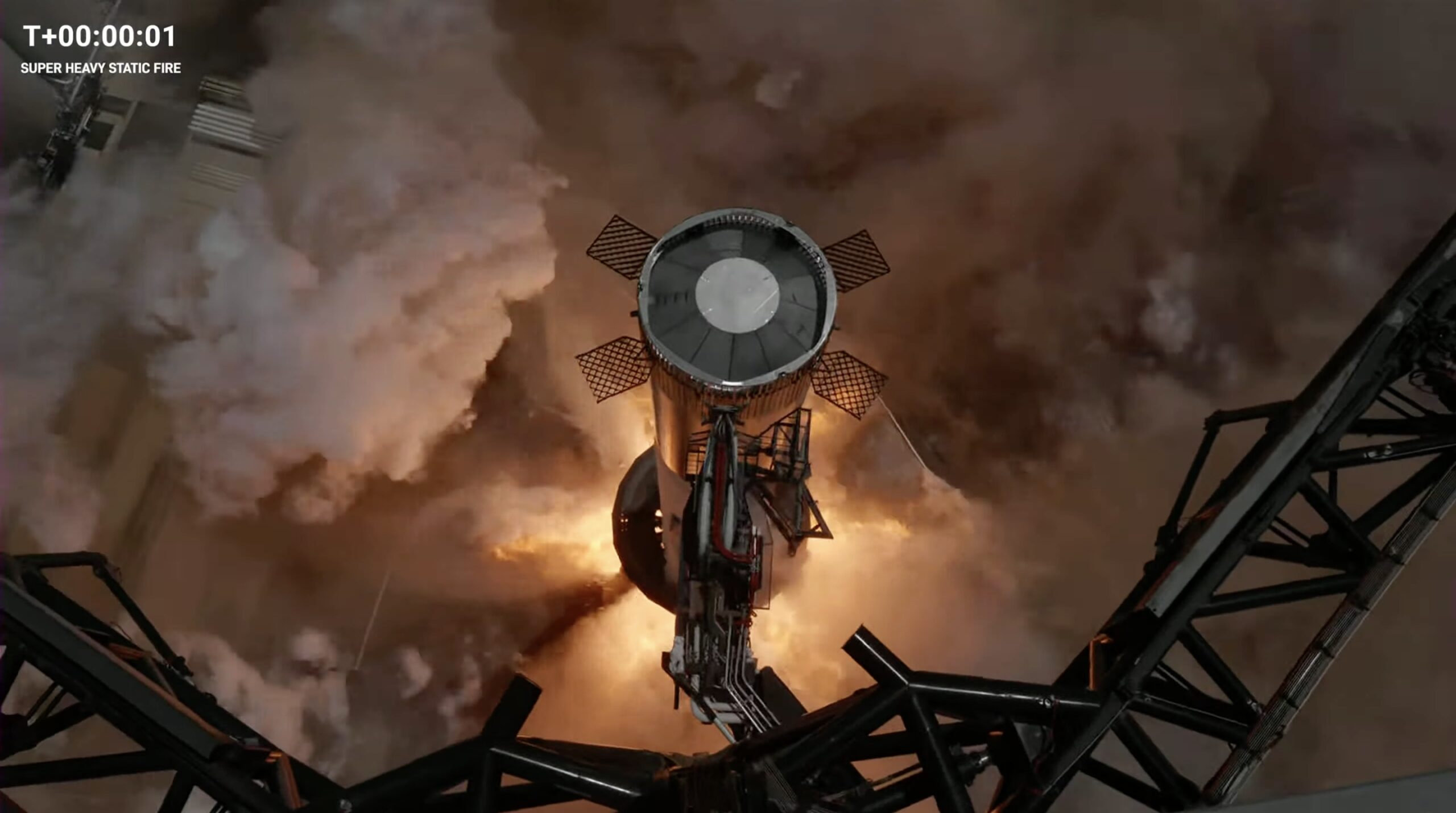WASHINGTON — SpaceX says it successfully test-fired the booster for its next Starship launch, although that liftoff may still be weeks away.
SpaceX fired the Raptor engines in the Super Heavy booster designated Booster 9 in a static-fire test at its Starbase test site in Boca Chica, Texas, at approximately 1:35 p.m. Eastern Aug. 25. SpaceX said it conducted a “full duration” firing, which appeared to last about five to six seconds.
SpaceX later stated that all 33 engines successfully ignited, although two shut down prematurely. “Congratulations to the SpaceX team on this exciting milestone!”
The company did not state if that performance was sufficient for it to proceed with a launch attempt, but it was better than an earlier test of the same booster Aug. 6. That test ended early, after the engines fired for less than three seconds, with four of the Raptors shutting down prematurely.
If SpaceX is satisfied with the outcome of the test, it is likely one of the final technical milestones before it is ready for a second integrated Starship/Super Heavy launch. The first, April 20, failed four minutes after liftoff when several Raptor engines in the Super Heavy booster shut down and vehicle later lost control and tumbled.
SpaceX, however, will still need to receive Federal Aviation Administration approval for a launch, which includes modifications to its original Starship/Super Heavy launch license. SpaceX delivered a report into the April 20 failure to the FAA earlier in the month, but the agency must still approve it and assess whether SpaceX has made the necessary changes before approving a revised license. The FAA has not given a timeline for that process, but industry observers believe that could take several weeks.
The company has already made several changes to the launch vehicle and the pad based on the experience from the April launch. The pad now has a water deluge system designed to prevent the damage the Raptor plume did to the pad, in the process sending sand and debris as far as 10 kilometers from the launch site. That deluge system was used in the two recent static-fire tests, although its effectiveness won’t be fully demonstrated until a launch because the engines were not fired at full thrust in the recent tests.
The booster now has an interstage ring on top with vents. That is designed to accommodate a “hot-staging” approach that SpaceX Chief Executive Elon Musk revealed in June, where the engines of the Starship upper stage are ignited while still attached to the Super Heavy booster. Doing so, he said, can improve the vehicle’s performance by as much as 10%.
Musk said in June that the company had made “well over a thousand” other changes to the vehicle that gave him increased confidence that the next launch will be successful. “I think the probability this next flight working, getting to orbit, is much higher than the last one. Maybe it’s like 60%,” he said.
